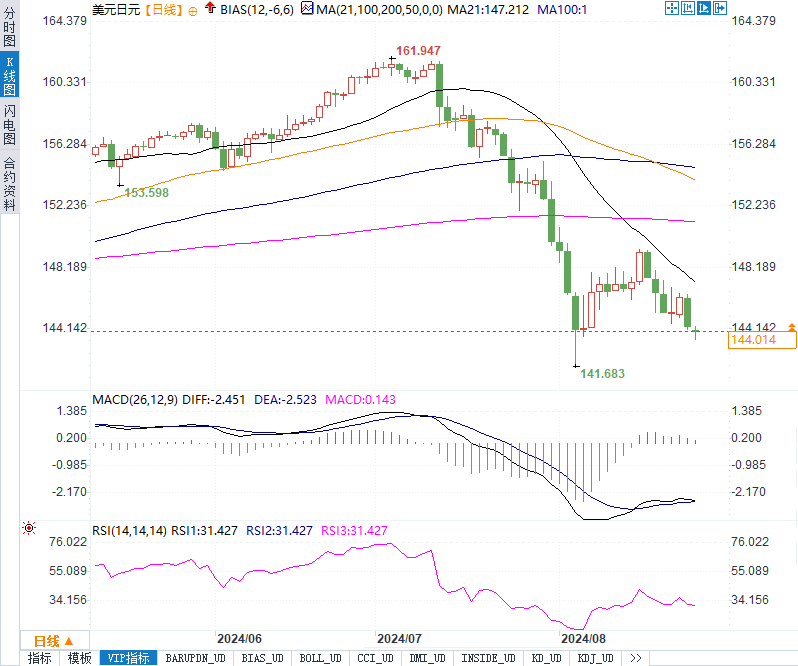In the global market on August 26th, investors closely monitored various important events and economic data, especially after
Federal Reserve Chairman Powell's Jackson Hole speech, the market trend became particularly complex. The following is an analysis of today's market background and the latest trends.
Powell stated in his speech on August 23 that the
Federal Reserve will soon initiate a cycle of interest rate cuts, and the risk of rising inflation has weakened. This signal further raises market expectations for a rate cut in September. Powell's remarks did not specify the magnitude of the rate cut, but the market is generally betting that the
Federal Reserve will cut interest rates by 25 basis points at its September meeting, and even some traders believe that the probability of a 50 basis point rate cut has increased.
The market's interpretation of Powell's speech is that the US economy is moving towards a soft landing, and this optimism has driven the stock market's rebound. Especially, after experiencing a significant decline in early August, the stock market showed signs of recovery. However, Powell's statement that "the time has come" suggests that the
Federal Reserve may continue to adopt loose policies in the coming months to address the downside risks in the job market.
Recently, the yield of US treasury bond bonds has changed significantly. The yield of 10-year treasury bond has remained at about 3.79%, which is only 10 basis points away from the yield of two-year treasury bond. In view of this, the market's concerns about economic recession have weakened.
The situation in the Middle East and the crude oil market
At the same time, the escalation of the situation in the Middle East has triggered a demand for safe haven assets in the market. The conflict between Israel and Hezbollah in Lebanon has once again escalated, raising concerns about oil supply disruptions. As a result, crude oil prices have risen by more than 1%, indicating that investors' concerns about potential disruptions to the oil supply chain in the Middle East continue to exist.
This geopolitical risk, combined with expectations of a Fed rate cut, has made market sentiment more complex. Investors are paying more attention to the allocation of safe haven assets in this context, especially in the fields of commodities such as gold and crude oil.
European Markets and Central Bank Policies
In the European market, the Stoxx 600 index remained almost unchanged at the opening on Monday, mainly due to a decrease in trading volume in the UK market due to holiday closures. Nevertheless, market expectations for the
Federal Reserve's upcoming interest rate cut remain high, which has had a wide-ranging impact on global markets.
On the European Central Bank side, analysts generally expect the ECB to cut interest rates by another 25 basis points at its meeting on September 12, and the cumulative rate cut may reach 163 basis points by the end of 2025. This policy expectation has driven fluctuations in the euro, but overall the euro's exchange rates against the US dollar and pound remain near several month highs.
In the foreign exchange market, the
USD/JPY hit a three week low and fell to 143.45 yen on Monday, the lowest level since August 5th. The US dollar remained stable against the euro and pound near several month lows. As investors' expectations of the
Federal Reserve cutting interest rates increase, the short positions in the US dollar have further increased, indicating that the market's bearish sentiment towards the US dollar is becoming stronger.
Bank of Japan President Kazuo Ueda reiterated his determination to take interest rate hike measures, which has strengthened the
USD/JPY trend. Nevertheless, the market remains cautious about the policy adjustments made by the Bank of Japan, especially against the backdrop of global central banks shifting towards loose policies.

Stock market and technology sector
In terms of technology stocks, the market's focus is on Nvidia, which is about to release its financial report. Nvidia's stock has risen by over 150% so far this year, becoming one of the important driving forces behind the S&P 500 index's growth. Chris Weston, head of research at Pepperstone Brokerage, pointed out that the market expects Nvidia to exceed analysts' expectations, but investors may have become accustomed to the phenomenon of the company's revenue exceeding analysts' expectations by $2 billion. If the performance is lower than expected, it may trigger a "sell out" of "good news".
This market expectation has limited the growth of technology stocks, especially under the dual impact of the
Federal Reserve's interest rate cut expectations and the escalation of the Middle East situation, investors have shown a more cautious attitude towards technology stocks.
Overall, the global market presents a complex trend in the game between
Federal Reserve policies, geopolitical risks, and economic data. With the expectation of interest rate cuts triggered by Powell's speech, the stock market may continue to receive support in the short term, but investors need to closely monitor the upcoming US employment report and European inflation data, which will become important basis for further market adjustments.
In this context, investors should maintain flexible trading strategies, pay attention to the allocation of safe haven assets, and be alert to the potential impact of the Middle East situation on the commodity market. Especially as the expectation of
Federal Reserve policy adjustments gradually becomes a market consensus, investors need to focus on the Fed's statements and economic data before the September meeting, which will determine the future direction of the market.
 Stock market and technology sector
Stock market and technology sector